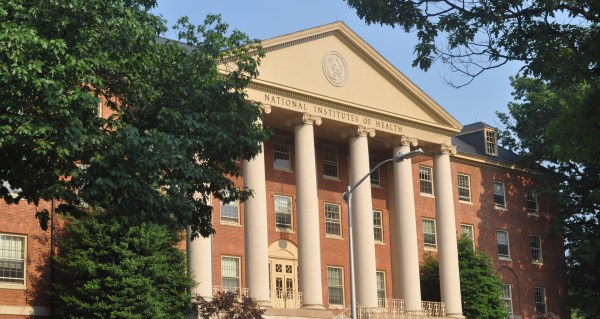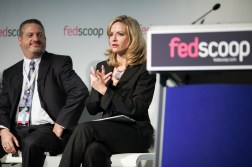The ‘tipping point’ of innovative IT acquisition
This is the first in a series of stories on a governmentwide movement on innovating federal acquisitions.
When Healthcare.gov launched with glitches in October 2013, it shouldn’t have been much of a surprise. Earlier that year, researchers at the Standish Group found that big IT projects in and out of government fail 94 percent of the time.
Healthcare.gov, whose initial price tag of $834 million may have ballooned into the billions, would have needed a miracle for a total success, based on the Standish findings.
“They didn’t have a chance in hell,” Jim Johnson, founder and chairman of the Standish Group, told ComputerWorld in the 2013 aftermath of the botched Obamacare site launch. “There was no way they were going to get this right — they only had a 6 percent chance.”
While the accuracy of Standish’s report is often debated, IT failure has become a way of life in the federal government. In February, the Government Accountability Office’s 2015 High Risk Report called out the government for spending “billions of dollars on failed and poorly performing IT investments which often suffered from ineffective management.”
But in small bubbles around the government, there are innovative thought leaders emerging who, with the air support of upper-level leadership, have a passion to drive acquisition change and are looking to prove there must be a better way to procure federal IT than failing more often than you succeed.

Mark Naggar, HHS and Federalwide Buyers Club program manager, delivers opening remarks at the Federalwide Buyers Club Conference for Innovative Acquisition in February. (HHS)
A gathering of innovators
On a snowy day in late February, Mark Naggar, the program manager of the HHS Buyers Club housed within the Department of Health and Human Services’ IDEA Lab, attracted more than 600 federal employees and contractors at D.C.’s Ronald Reagan Building to discuss innovative acquisition. When Naggar began planning the conference, he expected 75 to 100 people to be interested. By the end of registration, more than 1,000 had signed up, and if it hadn’t snowed, attendance, he believed, would’ve been even better.
After launching the HHS Buyers Club — an agile acquisition model to help the department procure IT services more efficiently and effectively — last summer, Naggar decided to expand the program throughout government. Focused more broadly on building a community of practice for innovative acquisition in all areas, not just IT, the Federalwide Buyers Club sponsored the conference with help from the Office of Federal Procurement Policy, the General Services Administration and its 18F team, and others like the White House and the U.S. Digital Service.
With innovative acquisition leaders from around government convened to discuss acquisition challenges and collaborate, Naggar said he noticed an excitement building in the room around a typically dull topic. That so many people showed broad interest in bettering federal acquisition validated his efforts with the Buyers Clubs and signaled a need for change.
“There’s a market for it. There’s a need, it was evident by the people who showed up, and there was a level of excitement in the room that was palpable,” he told FedScoop.
Typically those innovators are cordoned off to their own silos, unsure of the struggles outside their own agencies, left with little support or incentive to experiment in a risk-averse government bound to the legal guidelines of the Federal Acquisition Regulation — better known as the FAR — to procure more than $50 billion worth of IT services each year using waterfall methodologies.
Despite an apparent ineffectiveness acquiring IT services within government, federal procurement officials are trained to be risk averse — to minimize waste as agents of the taxpaying public. The mantra of “fail fast, fail small, fail often” popularized in the lean startup world of the private sector is enough to give a GS-11 procurement official nightmares.
“For the longest time, we just used traditional routes, and we’ve gotten ourselves in kind of a pickle with these high failure rates, whether they’re $1 million contracts or $100 million contracts,” Naggar said. While he questioned the methodology behind the Standish Group’s reporting, he said even if that finding is realistically a liberal deviation of 10 or 20 percent off, it’s still too much failure — and even small projects aren’t immune to the hiccups larger projects face.
Outgoing HHS Chief Technology Officer Bryan Sivak, who recruited Naggar to start the HHS Buyers Club, helped organize and spoke at the event. He said while you should take the 94 percent failure rate with a grain of salt, “I still think there is a problem. That number should be asymptotically approaching zero. We should be able to implement technology today in a way that works across the board in a repeatable fashion.”
This event showed Naggar, Sivak and other pioneers in the room like them that they are not alone; even top brass like OFPP Administrator Anne Rung, who spoke to open the conference, is on board with innovative acquisition. Rung, a huge supporter of Naggar and the Buyers Club model, detailed several new initiatives aimed at eradicating procurement failure using new approaches at a recent ACT-IAC conference, and she even said she wanted Buyers Clubs in all federal agencies.
The biggest takeaway from the event, Naggar told FedScoop afterward, was discovering “that there are a lot of like-minded people around government, and it’s rare that we can find each other. The folks that were in attendance were contracting and procurement officials, program officials — people who really wanted to learn more.”
He added, “People came away really just learning a lot that they had never known before. And a lot of that goes back to all these silos in government.”
Sivak too was inspired by the attendance and collaboration.
“The thing I was blown away by was the interest in it,” Sivak said. “Procurement is not the sexiest topic in the world, but to me that says something right there.”
18F’s Greg Godbout, who is leaving his position as executive director sometime this month, spoke about his team’s agile blanket purchase agreement, launched earlier this year. While the new BPA varies in some aspects with the other innovative acquisition models discussed at the conference, they’re all part of the same community of practice. And that was the point of the event — sharing experiments in acquisition in search of more successful models.
“The model here, it’s not exact, but it’s like crowdsourcing,” Godbout said. “If you look at crowdsourcing, one of the strengths is you have multiple groups sharing information at the same time, trying the same things in a bunch of small, different ways. Instead of one experiment that is linear that takes forever to get right, you can have a hundred small experiments going on with slight variations, and as long as everybody is sharing that information, they can iterate in the same amount of time on their next iteration [which] would have taken years for that linear project.”
That conference showed acquisition reform is bigger than a “buzz topic,” Naggar said. But it’s also bigger than one conference; this disorganized community has existed long before Naggar and the Buyers Club. And now that the respective parties are coming out of the woodwork, he said, they are beginning to grasp the opportunity for change and running with it.
“We’ve touched on something that I think is just getting started,” Naggar said. “This is the tipping point” for the “renaissance of IT delivery and innovative acquisition.”
Check FedScoop next week for the second installment of this series.




